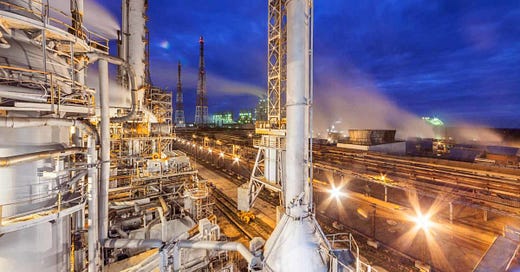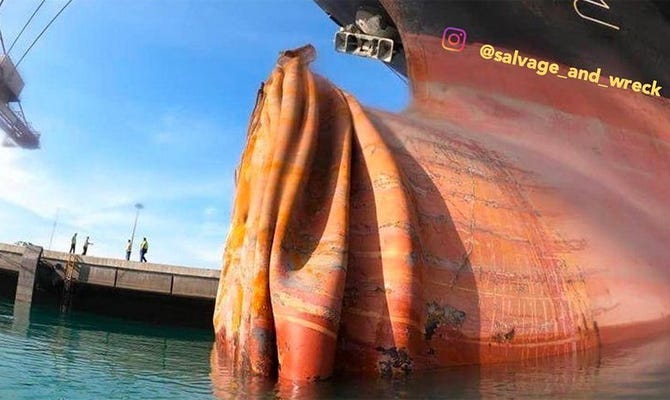Taking a deeper look at urea shortages
When emission reduction policies meet the supply chain realities
Have you wondered why we are facing again another shortage? This week, I’m taking an in-depth look at the urea shortages and the role China’s emission reduction policies had in bringing this issue.
The urea and AdBlue shortages have captured media headlines in Australia, South Korea, India and other parts of the world. The potential consequences of these shortages are quite concerning. AdBlue is a diesel exhaust fluid (DEF) added to reduce the engine NOx emissions. Few cars run on diesel in Australia, however most trucks, buses, commercial vehicles, farm and forestry equipment run on diesel fuel. Without AdBlue, all these vehicles would be ground to a halt. The issues go further than this. AdBlue consists about a third urea, which is also in short supply. Urea is one of the most nitrogen-dense fertilizers used by farmers worldwide and 90% of the world’s urea production is used as fertilizer. The urea shortage is a concern to food security because it threatens agriculture and livestock production. However, despite extensive media coverage of these shortages and their potential consequences, I’ve found few explanations on why these crises have developed in the first place.
If, like me, you are wondering how come there is another shortage of critical materials or services and if this is just another consequence of pandemic-related restrictions, you’ll surely find the rest of the article very interesting.
Understanding the urea supply chain
To understand why the urea shortage happened we need to have a look at how the urea manufacturing supply chain is set-up. Don’t worry if you’ve skipped chemistry high school lessons, no need to calculate any reaction equations here. Urea is an organic compound with the formula CO(NH2)2. It is manufactured by mixing ammonia (NH3), carbon dioxide (CO2), water (H2O) and heat. Ammonia is typically produced by steam reformation of methane (CH4) or gasification of coal which produces carbon monoxide (CO), hydrogen (H2), methane and water. Because these production processes are complementary, ammonia and urea manufacturing are generally co-located. Much of the world’s ammonia is produced through steam reformation of natural gas, however, some is produced from coal gasification. China has a significant coal gasification capacity which it uses to produce ammonia and which also reduces their manufacturing cost profile.
The ripple effects of restricting coal imports
China’s environmental policy, which restricted Australian coal imports in mid-2020, triggered coal price increases, coal shortages and later power outages, also affected ammonia and urea manufacturing. More expensive coal meant smaller profit margins and therefore fewer incentives for ammonia and urea manufacturing. Less coal meant less gasification, thus reducing the available inputs for ammonia and urea production. The ensuing power outages also curtailed manufacturing. All these consequences are not visible immediately mainly because buffer inventory which is used to guard against the natural economic and production cycles. As buffer inventory reduces, production is more likely to be affected.
The Australia coal import ban took more than a year to show its teeth. Given that Australian coal imports resumed in late-2021, it is likely that China’s urea production would take roughly a year to recover, as inventory buffers rebuild along the supply chain. However, China’s environmental policy has led to the closure of several ammonia-urea manufacturing plants in the last years meaning that production will not return to similar levels as the past years. It is important to note that although China is the biggest world manufacturer of urea, it is not the only one.
Mitigating the effects of urea shortages
As Australia, South Korea and others muster up forces to tackle these shortages, they have several potential short- and long-term levers to mitigate the effects of urea shortages and potential prevent them from reoccurring:
1. Build robustness in urea supply chains by sourcing from several manufacturing countries. The ‘all-eggs-in-one-basket’ strategy has shown its weaknesses on a number of occasions in the past two years while the resilience of supply chains has been continuously tested. It is no longer an option to source products from the cheapest producer when the consequences of shortages have national-level socioeconomic implications.
2. Seek substitutes for urea and AdBlue. Urea is a preferred nitrogen-based fertilizer because of its density, however it is not the only fertilizer product available. Unfortunately, the immediate option for AdBlue seems to be looping emissions sensors in trucks to allow them to operate even without this compound at the risk of increasing emissions but maintaining logistics and agricultural chains integrity.
3. Build national manufacturing capacity for critical materials such as urea and AdBlue. Ricardo’s competitive advantage model, which supports the theory that countries should specialize in areas where they have a comparative cost advantage and import the rest, holds well for non-essential goods (ice-creams, fidget spinners, ping pong balls). However, when the consequences of shortages of critical products affect food security or logistics chains’ integrity, a minimal level of national manufacturing capacity should be maintained.
Emission reduction policies gone wrong
This is not the first time emission reduction policies aiming to reduce fossil fuel consumption are enacted, however, it is one of the first times when the consequences of these initiatives are visible in a relatively short time. More often than not, such initiatives, although well intended, seem to have the opposite effect and unintended consequences. China’s push to reduce emissions from coal consumption may succeed in increasing emissions from diesel-powered vehicles worldwide, all without providing a viable energy alternative for domestic needs – as their recent province-wide power outages demonstrated. The battery and hydrogen power pack supply chains report which I co-authored with A/Prof Paul Turner highlighted that banning fossil fuel car sales by 2030 could result in older, more polluting cars being used for longer. Similarly, it’s anyone’s guess what the effects of Germany’s plans to decommission its coal-fired power stations will have on power and raw material availability. My suspicion is that Germany, like China, will soon find itself discovering just how complex modern supply chains are.
The world is truly interconnected. Businesses have developed to service, support, use residues or compete with existing supply chains and on top of which they have built their own supply chains. Intervening and changing the fundamental ways in which the world is powered, even if for a justifiable reason such as the threat to climate change, is bound to have far reaching consequences. As noble the goal of tackling climate change is, the methods used by policymakers so far have been crude, disconnected from supply chain realities and, oftentimes, achieved the exact opposite outcome than intended. It is time to actively investigate the potential consequences of such emission reduction initiatives before implementing them, rather than waiting for them to hit like a deer or joey in the headlights.
In other news
Yes, there’s another ship fire, this time not in a container ship (LINK)
The container shipping congestion report briefly explained that container ship designs are changing by removing the bulbous bow from the ships’ hull. This can be expensive. Some crews have attempted to find a cheaper way. (LINK)
Someone in Russia came up with a brilliant way to charge their electric car from the 19th floor of their apartment building by dandling a very, very long cable all the way down. (LINK)
As 2021 comes to an end, I wish you all a Merry Christmas and a Happy New Year!






